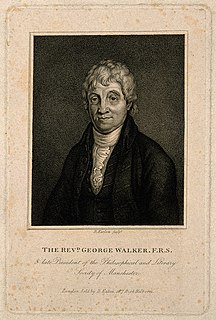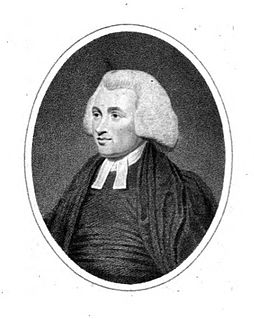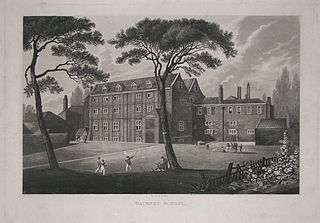Related Research Articles

Thomas Secker was the Archbishop of Canterbury in the Church of England.

Bunhill Fields is a former burial ground in central London, in the London Borough of Islington, just north of the City of London. What remains is about 1.6 hectares in extent and the bulk of the site is a public garden maintained by the City of London Corporation.

Richard Price was a Welsh moral philosopher, Nonconformist minister and mathematician. He was also a political reformer, pamphleteer, active in radical, republican, and liberal causes such as the French and American Revolutions. He was well-connected and fostered communication between many people, including Thomas Jefferson, John Adams, George Washington, Mirabeau and the Marquis de Condorcet. According to the historian John Davies, Price was "the greatest Welsh thinker of all time".

Abraham Rees was a Welsh nonconformist minister, and compiler of Rees's Cyclopædia.

George Henry FitzRoy, 4th Duke of Grafton, KG, styled Earl of Euston until 1811, was a British peer and Whig politician who sat in the House of Commons from 1782 to 1811 when he succeeded to the Dukedom.

William Morgan, FRS was a Welsh physician, physicist and statistician, who is considered the father of modern actuarial science. He is also credited with being the first to record the "invisible light" produced when a current is passed through a partly evacuated glass tube: "the first x-ray tube".
George Morgan may refer to:

John Conder D.D. was an Independent minister at Cambridge who later became President of the Independent College, Homerton in the parish of Hackney near London. John Conder was the theological tutor at Plaisterers' Hall Academy in 1754; and residential tutor and theological tutor at Mile End Academy, then the theological tutor at Homerton Academy.
This article is about the particular significance of the year 1798 to Wales and its people.
This article is about the particular significance of the year 1777 to Wales and its people.

George Walker was a versatile English Dissenter, known as a mathematician, theologian, Fellow of the Royal Society, and activist.

The New College at Hackney was a dissenting academy set up in Hackney in April 1786 by the social and political reformer Richard Price and others; Hackney at that time was a village on the outskirts of London, by Unitarians. It was in existence from 1786 to 1796. The writer William Hazlitt was among its pupils, sent aged 15 to prepare for the Unitarian ministry, and some of the best-known Dissenting intellectuals spent time on its staff.
Thomas Dixon was an English nonconformist minister and tutor.

John Eyre was an English evangelical clergyman. He helped in establishing some of the major national evangelical institutions.

William Shepherd was an English dissenting minister and politician, known also as a poet and writer.

Newcome's School was a fashionable boys' school in Hackney, then to the east of London, founded in the early 18th century. A number of prominent Whig families sent their sons there. The school closed in 1815, and the buildings were gutted in 1820. In 1825 the London Orphan Asylum opened on the site. Today the Clapton Girls' Academy is located here.
The Gravel Pit Chapel was established in 1715–16 in Hackney, then just outside London, for a Nonconformist congregation, which by the early 19th century began to identify itself as Unitarian. In 1809 the congregation moved to the New Gravel Pit Chapel nearby, while its old premises were taken over by Congregationalists. The New Gravel Pit Chapel was closed and demolished in 1969.
References
- Attribution
![]() This article incorporates text from a publication now in the public domain : Thomas, Daniel Lleufer (1894). "Morgan, George Cadogan". In Lee, Sidney (ed.). Dictionary of National Biography . 39. London: Smith, Elder & Co.
This article incorporates text from a publication now in the public domain : Thomas, Daniel Lleufer (1894). "Morgan, George Cadogan". In Lee, Sidney (ed.). Dictionary of National Biography . 39. London: Smith, Elder & Co.